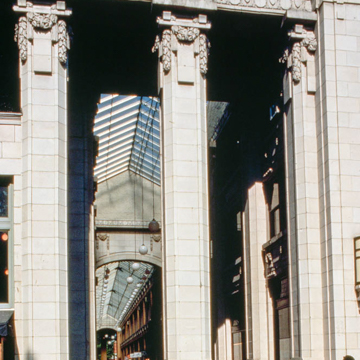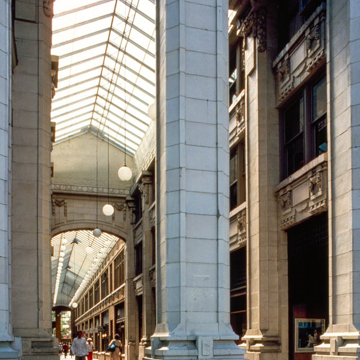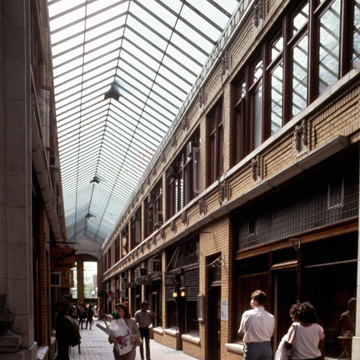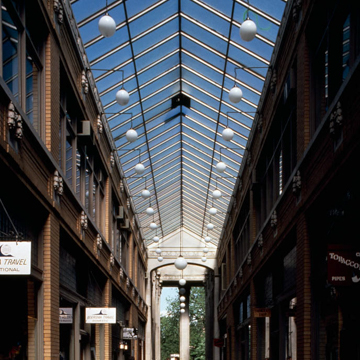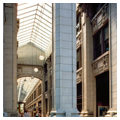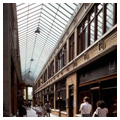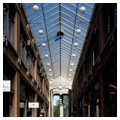Nickels Arcade is distinctive in Michigan and it acts as an important extension of Ann Arbor's commercial development adjacent to the University of Michigan campus. Recognizing that the campus commercial area would flourish, Tom E. Nickels, son of a meat market proprietor, commissioned Pipp (b. 1872) of Ann Arbor, who was the designer of several local commercial and residential buildings, to draft the plans. A. R. Cole and Company of Ann Arbor built the arcade. Two levels of shops and offices extend along a 265-foot-long skylit passageway between S. State and Maynard streets. The steel, brick, and concrete building is clad and detailed with glazed terra-cotta. In its white exterior and design, the arcade is Beaux-Arts classical; in decorative treatment, it is Art Deco. A giant, three-story, three-bay open portico, flanked by stores and a bank, fronts the S. State Street facade, while brick faces the austere Maynard Street rear. The Farmers and Mechanics Bank originally occupied the prime space on the southeast corner of the building. Precedents for glass-roofed market arcades stretch back to the early nineteenth century in London and Paris, and in Providence, Rhode Island. The Nickels Arcade, however, is smaller than most similar projects. Conveniently located facing S. State Street and the campus pedestrian diagonal, the arcade is perfectly scaled to its small-city environs.
You are here
Nickels Arcade
If SAH Archipedia has been useful to you, please consider supporting it.
SAH Archipedia tells the story of the United States through its buildings, landscapes, and cities. This freely available resource empowers the public with authoritative knowledge that deepens their understanding and appreciation of the built environment. But the Society of Architectural Historians, which created SAH Archipedia with University of Virginia Press, needs your support to maintain the high-caliber research, writing, photography, cartography, editing, design, and programming that make SAH Archipedia a trusted online resource available to all who value the history of place, heritage tourism, and learning.


